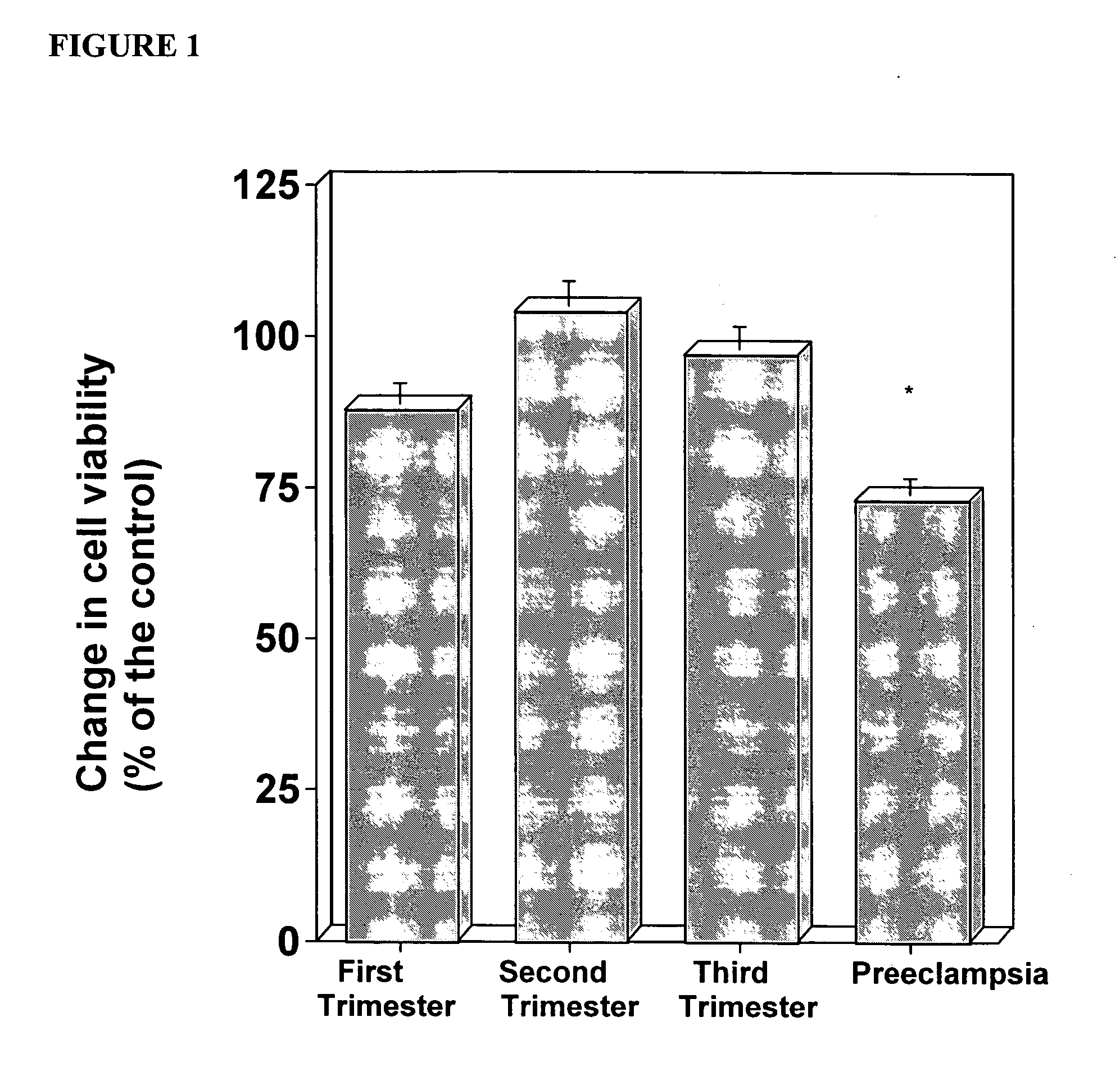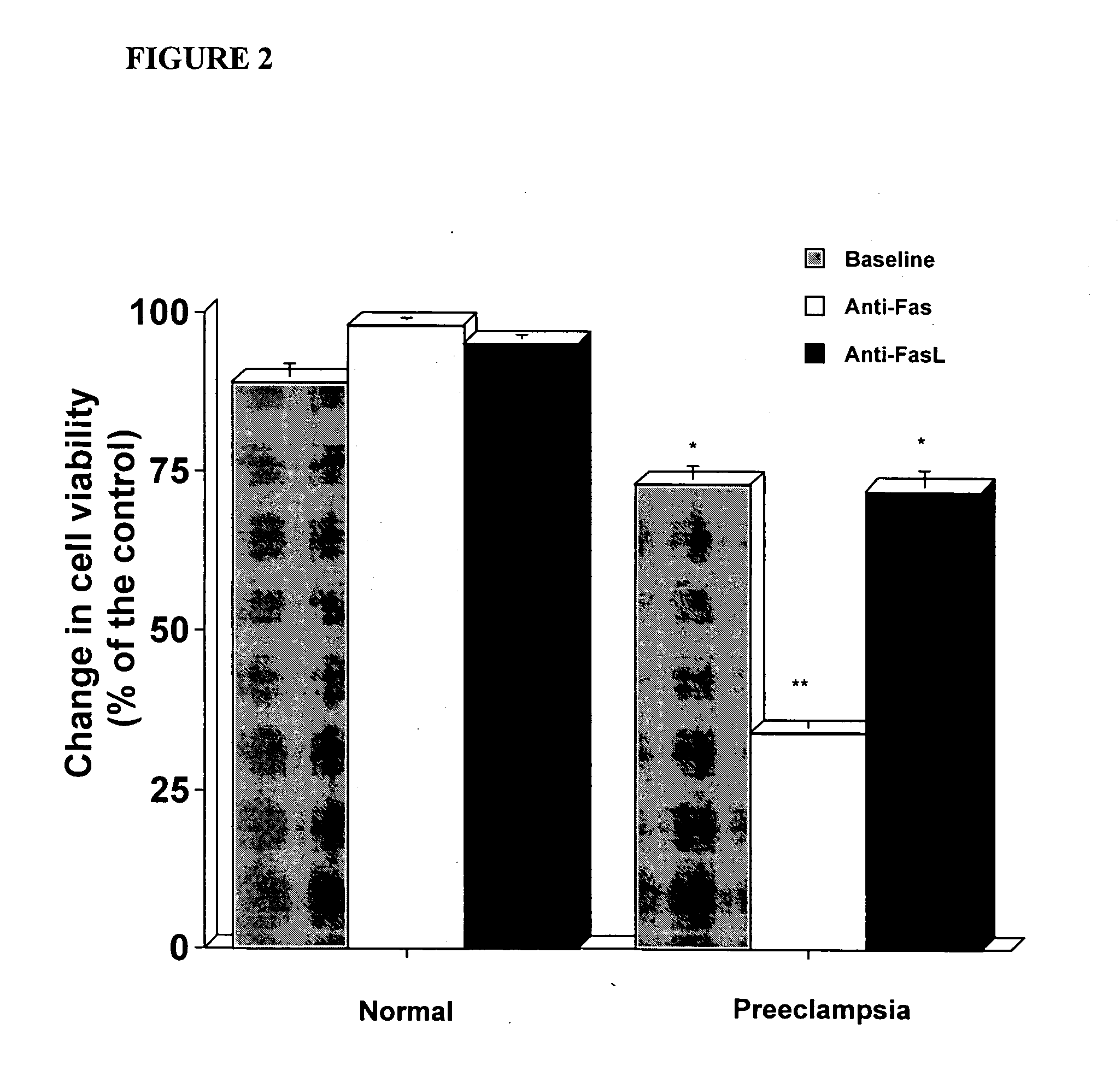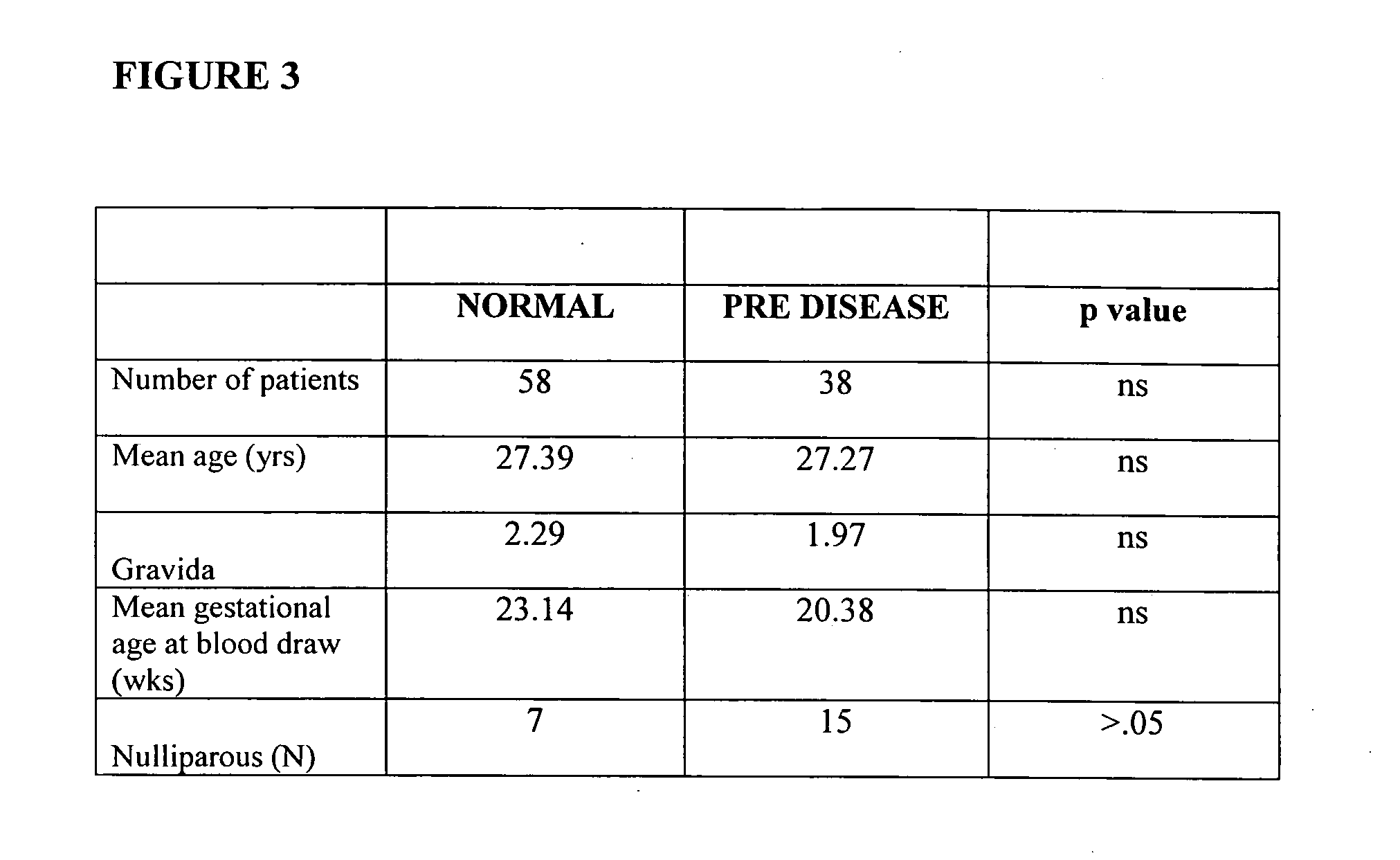In vitro test to detect risk of preeclampsia
a preeclampsia risk and in vitro test technology, applied in the field of in vitro test to detect the risk of preeclampsia, can solve the problem of little progress in the treatment of this disorder, and achieve the effect of reducing the viability of trophoblasts and impaired trophoblast function
- Summary
- Abstract
- Description
- Claims
- Application Information
AI Technical Summary
Benefits of technology
Problems solved by technology
Method used
Image
Examples
example 1
Methods
[0050] Cells
[0051] First trimester H8 trophoblast cell line was maintained in RPMI supplemented with 10% Fetal Bovine Serum (FBS) (Gemini Bioproducts), 1000 units / ml penicillin, 100 g / ml streptomycin, 10 mM HEPES, 100 nM non-essential amino acids and 1 mM sodium pyruvate (Gibco, Carlsbad, Calif.), at 37° C. / 5% CO2.
[0052] Blood Samples
[0053] Blood samples were obtained from normal patients in the first (18), second (19), and third trimester (11), and 12 preeclamptic patients. Pregnancies were considered normal when medical and obstetrical complications of pregnancy were ruled out and birthweight was appropriate-for-gestational-age at term (≧37 gestational weeks). Preeclampsia was defined as hypertension (systolic blood pressure ≧140 mmHg or diastolic blood pressure ≧90 mmHg on at least two occasions, 4 hours to 1 week apart) and proteinuria (>300 milligrams in a 24 hour urine collection or one dipstick measurement >2+)(21). The medical records of all of the normal control ...
example 2
[0073] Applicants investigated whether the sera of women who subsequently develop preeclampsia have a pro-apoptotic effect on trophoblasts.
[0074] Study Design
[0075] Serum samples were obtained from 96 pregnant women. Fifty-eight samples (28 first trimester, 19 second trimester, 11 third trimester) were obtained from women who remained normotensive throughout the gestation (herein referred to as normal). Thirty-eight samples (14 first trimester, 18 second trimester, 6 third trimester) were from women who were normotensive at the time that the serum samples were obtained and who subsequently developed preeclampsia (herein referred to as pre-disease). Preeclampsia was defined as hypertension (systolic blood pressure ≧140 mmHg or diastolic blood pressure ≧90 mmHg on at least two occasions, 4 hours to 1 week apart) and proteinuria (>300 milligrams in a 24 hour urine collection or one dipstick measurement >2+)(21). The medical records of all of the normal control patients were reviewed ...
PUM
 Login to View More
Login to View More Abstract
Description
Claims
Application Information
 Login to View More
Login to View More - R&D
- Intellectual Property
- Life Sciences
- Materials
- Tech Scout
- Unparalleled Data Quality
- Higher Quality Content
- 60% Fewer Hallucinations
Browse by: Latest US Patents, China's latest patents, Technical Efficacy Thesaurus, Application Domain, Technology Topic, Popular Technical Reports.
© 2025 PatSnap. All rights reserved.Legal|Privacy policy|Modern Slavery Act Transparency Statement|Sitemap|About US| Contact US: help@patsnap.com



